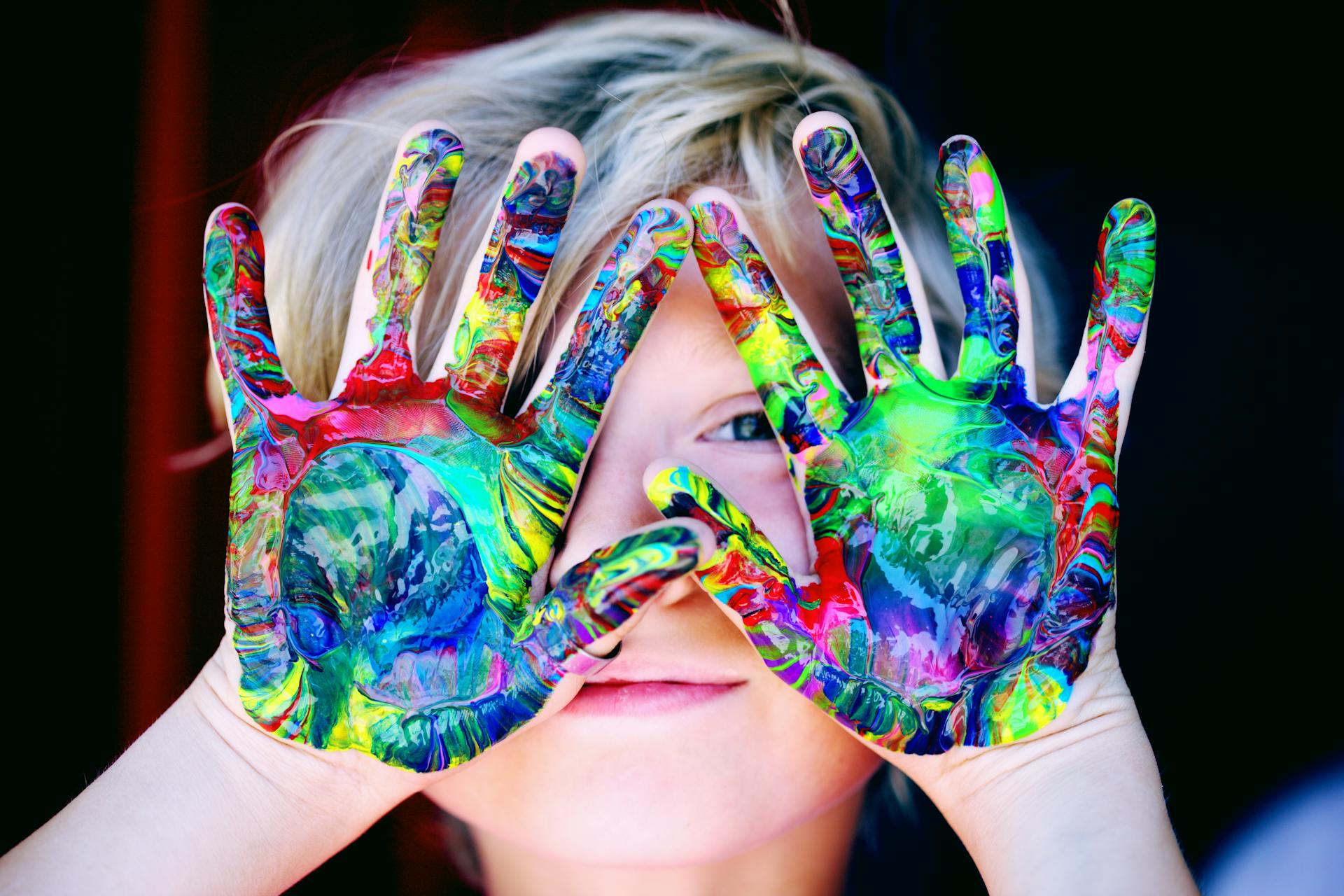Stuck in a mental rut, struggling to find innovative solutions to complex problems?
As an entrepreneur with over a decade of experience, I’ve faced this challenge countless times.
That’s when I discovered the game-changing power of infusing creativity into critical thinking. This dynamic duo has not only revolutionized my approach to problem-solving but has also propelled my business to new heights.
In this comprehensive guide, we’ll explore how you can harness the synergy between creativity and critical thinking to unlock your full potential and confidently tackle challenges.
What is Creative Critical Thinking?
Critical thinking and creativity are often seen as separate entities, but they’re actually two sides of the same coin. Critical thinking involves analyzing, evaluating, and synthesizing information to form judgments and make decisions. Creativity, on the other hand, is the ability to generate novel and valuable ideas. When combined, these skills form a powerful toolkit for tackling complex challenges.
As someone who’s navigated the ups and downs of entrepreneurship, I’ve learned that critical thinking provides the structure, while creativity adds the spark that leads to breakthrough solutions. It’s like having a well-built car (critical thinking) with a high-performance engine (creativity) – together, they can take you places you never thought possible.
The Synergy Effect: How Creativity Enhances Critical Thinking
Creativity isn’t just about artistic expression; it’s a cognitive skill that can significantly enhance our ability to think critically. Here’s how:
- Expanding perspectives: Creative thinking encourages us to look at problems from multiple angles, leading to more comprehensive analysis.
- Generating alternatives: By thinking creatively, we can come up with a wider range of potential solutions to evaluate critically.
- Connecting disparate ideas: Creativity helps us see relationships between seemingly unrelated concepts, leading to innovative insights.
- Challenging assumptions: Creative thinking pushes us to question the status quo, a crucial aspect of critical analysis.
Breaking Mental Barriers: Overcoming Cognitive Biases
Our minds are riddled with cognitive biases that can hinder both critical thinking and creativity. By understanding and actively working to overcome these biases, we can enhance our creative critical thinking abilities.
Common cognitive biases include:
- Confirmation bias: Seeking information that confirms our existing beliefs
- Anchoring bias: Relying too heavily on the first piece of information encountered
- Availability heuristic: Overestimating the likelihood of events based on recent or vivid memories
- Dunning-Kruger effect: Overestimating our own knowledge or ability in a given area
To overcome these biases, try:
- Actively seeking out diverse perspectives
- Challenging your initial assumptions
- Using structured decision-making frameworks
- Embracing uncertainty and admitting knowledge gaps
By acknowledging and addressing these biases, we open ourselves up to more creative and critical approaches to problem-solving.
The Creative Problem-Solving Process
Integrating creativity into critical thinking isn’t about abandoning structure; it’s about enhancing our problem-solving process. Here’s a framework I’ve developed over years of tackling complex business challenges:
- Define the problem creatively
- Generate diverse solutions
- Critically evaluate options
- Refine and combine ideas
- Implement and iterate
This process combines divergent thinking (generating many ideas) with convergent thinking (critically evaluating and refining those ideas). It’s a powerful approach that has helped me navigate everything from product development to market expansion strategies.
Tools and Techniques for Creative Critical Thinking
To boost your creative critical thinking, try incorporating these tools and techniques into your problem-solving toolkit:
- Mind mapping: Visually organize ideas and see connections
- Six Thinking Hats: Approach problems from different perspectives
- SCAMPER technique: Substitute, Combine, Adapt, Modify, Put to another use, Eliminate, Reverse
- Analogical thinking: Draw parallels between different domains
- Reverse brainstorming: Identify ways to cause a problem, then reverse them
I’ve found that regularly rotating through these techniques keeps my thinking fresh and helps me avoid getting stuck in mental ruts.
Cultivating a Creative Mindset in Daily Life
Creativity isn’t a switch you can flip on and off; it’s a muscle that needs regular exercise. Here are some ways to infuse creativity into your daily routine:
- Practice mindfulness meditation to quiet mental chatter
- Engage in hobbies unrelated to your work
- Seek out new experiences and perspectives
- Keep a curiosity journal to document interesting observations
- Embrace play and experimentation in your work
By making creativity a habit, you’ll find that your critical thinking naturally becomes more innovative and effective.
The Role of Divergent Thinking in Critical Analysis
Divergent thinking – the ability to generate multiple, unique ideas – is a cornerstone of both creativity and effective critical analysis. It allows us to:
- Consider a wider range of possibilities
- Identify potential flaws or limitations in initial ideas
- Combine concepts in novel ways
- Adapt to changing circumstances more easily
Embracing Failure: A Catalyst for Creative Growth
Fear of failure can stifle both creativity and critical thinking. By reframing failure as a learning opportunity, we open ourselves up to more adventurous and potentially groundbreaking ideas.
In my early days as an entrepreneur, I was paralyzed by the fear of making mistakes. It wasn’t until I embraced failure as part of the creative process that I truly began to innovate. Now, I encourage my teams to take calculated risks and view setbacks as valuable data points rather than defeats.
The Neurological Connection: How Creativity Rewires Your Brain
Recent neuroscience research has shown that engaging in creative activities can actually change the structure and function of our brains. This neuroplasticity enhances our ability to think critically and creatively over time.
Key findings include:
- Increased connectivity between different brain regions
- Enhanced problem-solving abilities
- Improved emotional regulation
- Better ability to generate and evaluate ideas
By consistently engaging in creative activities, we’re not just practicing a skill – we’re literally rewiring our brains for more effective critical thinking.
Applying Creative Critical Thinking in Business
In the fast-paced world of business, creative critical thinking can be a game-changer. Here are some areas where I’ve seen it make a significant impact:
- Product innovation: Combining market analysis with creative ideation
- Marketing strategies: Developing unique campaigns that stand out from the competition
- Organizational culture: Fostering an environment that encourages both analytical and creative thinking
- Problem-solving: Tackling complex business challenges with innovative approaches
- Strategic planning: Envisioning future scenarios and preparing for them creatively
By integrating creative critical thinking into all aspects of business operations, companies can stay agile and innovative in an ever-changing marketplace.
Education and Creativity: Nurturing Young Critical Thinkers
As a parent and occasional guest lecturer, I’m passionate about fostering creative critical thinking skills in young minds. Here are some strategies for educators and parents:
- Encourage questioning and curiosity
- Provide open-ended problems with multiple solutions
- Incorporate arts and creative expression into all subjects
- Teach metacognition – thinking about thinking
- Use gamification to make critical thinking fun and engaging
By nurturing these skills early, we’re preparing the next generation to tackle complex global challenges with innovation and insight.
The Future of Work: Why Creative Critical Thinking Matters
As automation and artificial intelligence continue to reshape the job market, creative critical thinking is becoming increasingly valuable. Here’s why:
- Machines excel at routine tasks, but struggle with creative problem-solving
- Complex, interdisciplinary challenges require innovative approaches
- Adaptability and lifelong learning are crucial in a rapidly changing world
- Emotional intelligence and creativity give humans an edge over AI
Developing strong creative critical thinking skills is one of the best ways to future-proof your career and stay relevant in an evolving job market.
Measuring and Improving Your Creative Critical Thinking Skills
While creativity and critical thinking can seem abstract, there are ways to measure and improve these skills:
- Take standardized tests like the Watson-Glaser Critical Thinking Appraisal
- Use creativity assessments like the Torrance Tests of Creative Thinking
- Set personal challenges to solve problems in innovative ways
- Seek feedback from peers and mentors on your problem-solving approaches
- Keep a reflective journal to track your thinking processes and insights
Regular assessment and deliberate practice can lead to significant improvements in your creative critical thinking abilities.
Case Studies: Real-World Examples of Creative Critical Thinking
Let’s explore some real-world examples of creative critical thinking in action:
- Airbnb’s response to the COVID-19 crisis: Pivoting to virtual experiences
- SpaceX’s reusable rockets: Challenging assumptions in space technology
- Netflix’s content recommendation algorithm: Combining data analysis with creative predictions
- IKEA’s flat-pack furniture revolution: Rethinking product design and logistics
- Apple’s iPhone launch: Reimagining the mobile phone user experience
Putting It All Together: Your Action Plan for Creative Critical Thinking
Now that we’ve explored the various aspects of creative critical thinking, it’s time to put this knowledge into action. Here’s a step-by-step plan to enhance your skills:
- Assess your current creative and critical thinking abilities
- Identify areas for improvement
- Choose 2-3 techniques from this guide to practice regularly
- Set specific goals for applying creative critical thinking in your work or personal life
- Seek out challenging problems that require innovative solutions
- Reflect on your progress and adjust your approach as needed
- Share your insights and collaborate with others to further develop your skills
Table: Comparing Traditional Critical Thinking vs. Creative Critical Thinking
| Aspect | Traditional Critical Thinking | Creative Critical Thinking |
|---|---|---|
| Approach | Linear, structured | Non-linear, flexible |
| Focus | Analysis and evaluation | Generation and synthesis |
| Problem-solving style | Convergent | Divergent and convergent |
| Risk tolerance | Risk-averse | Calculated risk-taking |
| Perspective | Seeks objectivity | Embraces subjectivity |
| Outcome | Best known solution | Novel, innovative solution |
| Thinking process | Vertical thinking | Lateral thinking |
| Knowledge application | Within domain | Cross-domain |
| Emphasis | Logic and reason | Imagination and intuition |
| Constraints | Works within given parameters | Challenges assumptions |
TL;DR
Creative critical thinking combines analytical skills with innovative idea generation to solve complex problems more effectively.
By integrating creativity into the critical thinking process, we can overcome cognitive biases, generate diverse solutions, and adapt to changing circumstances.
This approach is crucial in business, education, and personal development, especially as we face an increasingly automated future.
To enhance your creative critical thinking skills, practice techniques like mind mapping and divergent thinking, embrace failure as a learning opportunity, and cultivate a creative mindset in daily life.
Regular assessment and deliberate practice can lead to significant improvements in your ability to tackle challenges with both rigor and innovation.
Q&A
Q1: Can creative thinking really be learned, or is it an innate talent?
A1: While some people may have a natural inclination towards creativity, creative thinking is absolutely a skill that can be learned and improved. Like any skill, it requires practice, dedication, and the right techniques. By consistently engaging in creative exercises and challenging yourself to think differently, anyone can enhance their creative abilities.
Q2: How can I overcome mental blocks when trying to think creatively?
A2: Mental blocks often stem from fear of failure or judgment. To overcome them, try techniques like freewriting, changing your environment, or using random word association. It’s also helpful to give yourself permission to generate “bad” ideas – often, the process of creating without judgment can lead to unexpected breakthroughs.
Q3: Is there a risk of overthinking when combining creativity with critical thinking?
A3: While it’s possible to overthink, the key is to find a balance. Use creativity to generate ideas freely, then apply critical thinking to evaluate and refine those ideas. Set time limits for different stages of the process to avoid getting stuck in analysis paralysis.
Q4: How can organizations foster a culture of creative critical thinking?
A4: Organizations can encourage creative critical thinking by:
- Providing time and resources for brainstorming and experimentation
- Rewarding innovative ideas, even if they don’t all succeed
- Offering training in creative problem-solving techniques
- Creating diverse teams to bring together different perspectives
- Establishing a psychologically safe environment where people feel comfortable sharing unconventional ideas
Q5: Can creative critical thinking be applied to fields that are traditionally seen as purely analytical, like finance or engineering?
A5: Absolutely! In fact, some of the most significant innovations in these fields have come from creative approaches to traditional problems. In finance, for example, creative critical thinking has led to new financial instruments and risk management strategies. In engineering, it’s resulted in breakthrough designs and more efficient processes. The key is to use creativity to challenge assumptions and generate new ideas, then apply rigorous analysis to evaluate and implement those ideas.
Creative Critical Thinking Quiz:
- Do you regularly seek out diverse perspectives on problems you’re trying to solve?
- When faced with a challenge, do you generate multiple potential solutions before choosing one?
- Have you used analogies from unrelated fields to gain insights into your work?
- Do you set aside time for unstructured thinking or brainstorming in your weekly schedule?
- When your first solution doesn’t work, do you view it as a learning opportunity rather than a failure?
Scoring:
- Give yourself 1 point for each “yes” answer.
- 0-1 points: You have significant room for improvement in your creative critical thinking. Try incorporating some of the techniques discussed in this article into your daily routine.
- 2-3 points: You’re on the right track! Continue to practice and expand your creative critical thinking skills.
- 4-5 points: Excellent! You’re already applying many principles of creative critical thinking. Challenge yourself to push even further and mentor others in these skills.
Remember, the goal isn’t just to score high on this quiz, but to continuously improve your ability to think both creatively and critically. Use your score as a starting point for reflection and growth.





